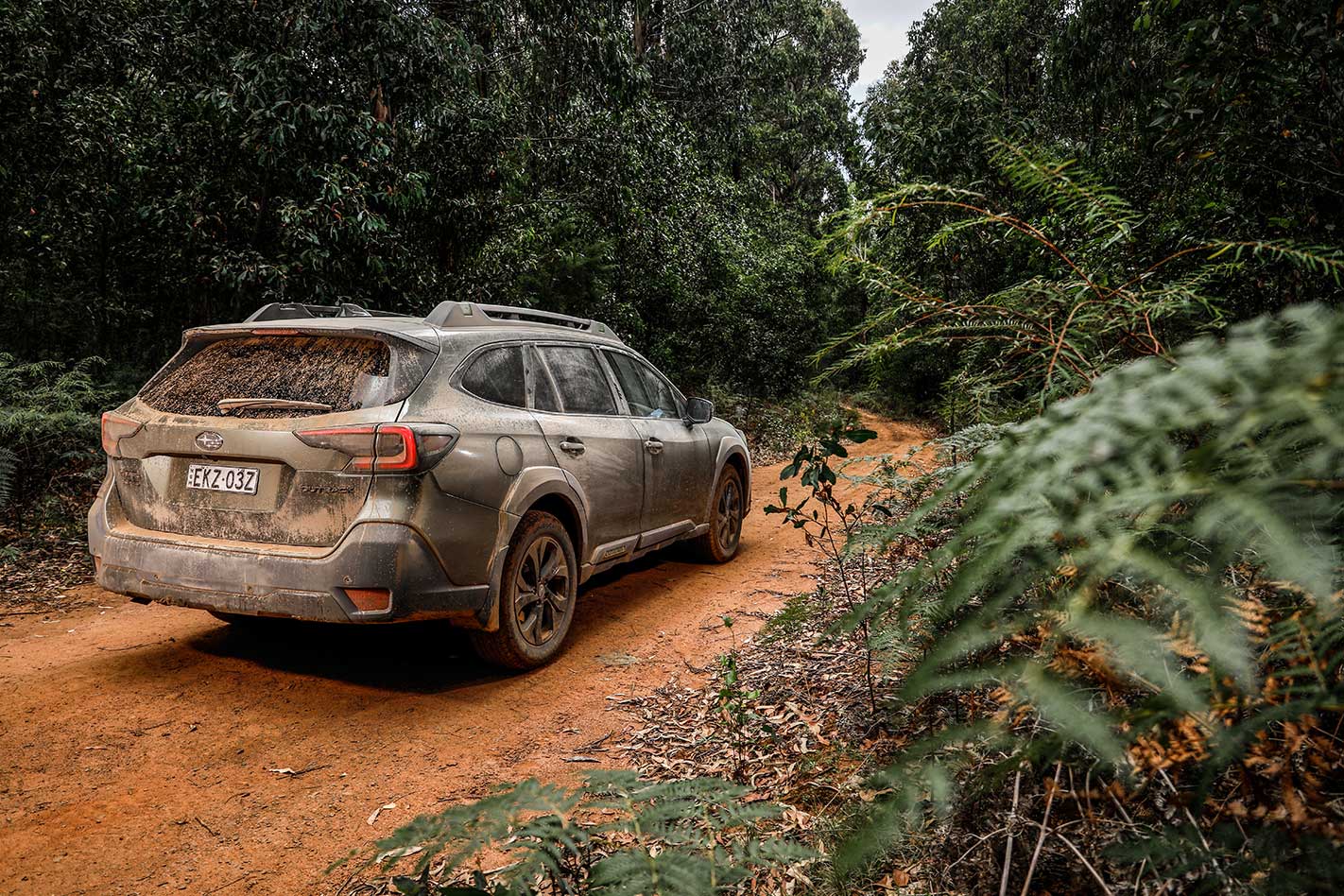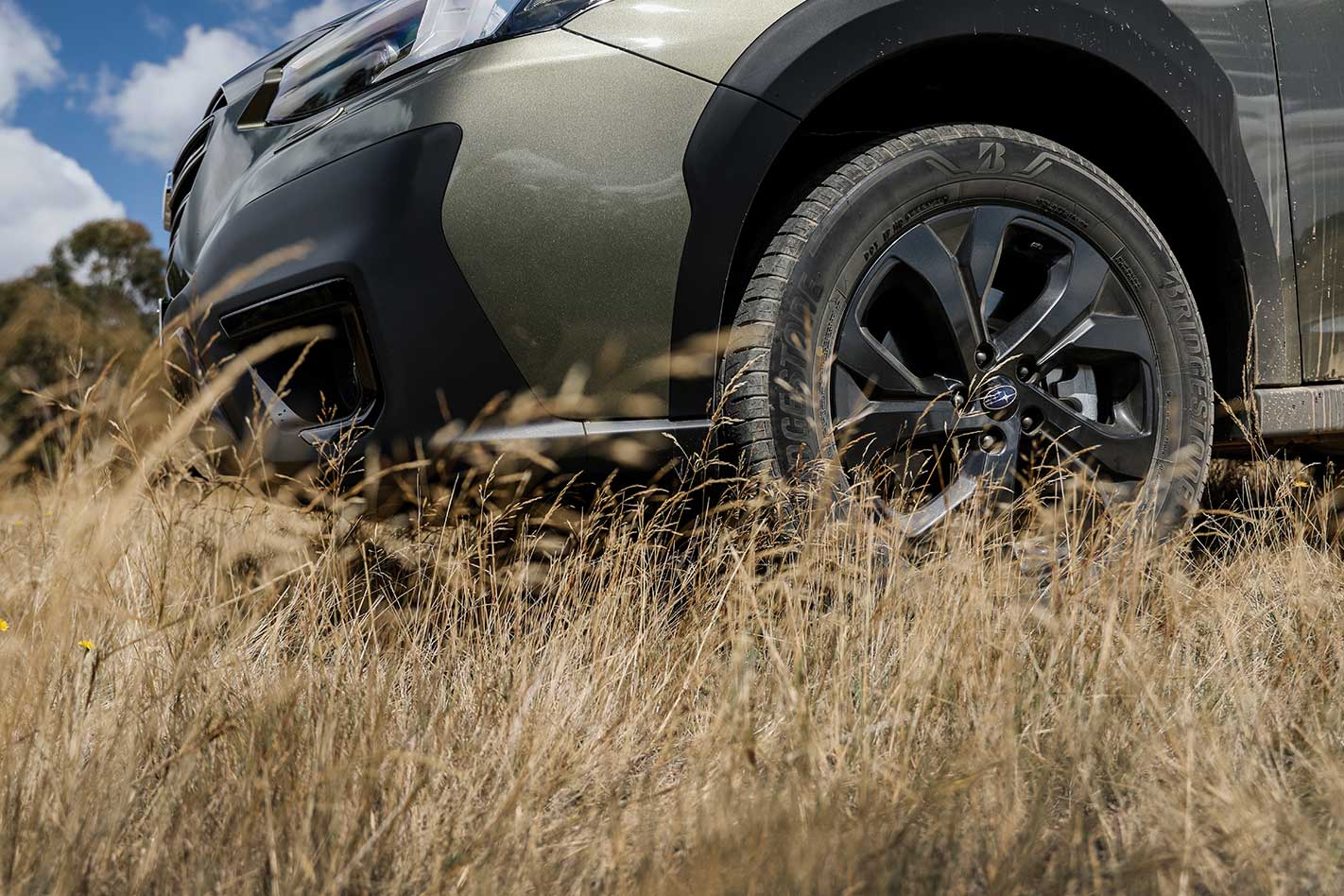We’re lost. Not terribly – this isn’t a tragic tale in the style of Burke and Wills, a story of the unforgiving Australian landscape claiming two more scalps – but the fact remains that I don’t really know where we are or how to get to where we need to be.
My stress levels would be higher if we didn’t have the latest Subaru Outback Sport at our disposal, a car that’s already proven capable of far more than most would give it credit for.
If you occasionally – or even frequently – venture off the beaten track and think you need a towering SUV to do so then we have news for you.

Subaru has rationalised the range, binning the six-cylinder and diesel models and offering a trio of 2.5-litre, boxer-four variants starting at $39,990, rising to $44,490 for the mid-spec Sport we have here and topping out with the $47,790 Touring.
It’s an inescapable fact that prices have increased – the previous Outback 2.5 started at $36,240, rising to $42,640 for the Premium – but the standard equipment list is now an almighty long one, so much so that it’s a bit challenging to know where to start.

The safety equipment list is equally extensive, with airbags galore, autonomous emergency braking and steering, lane centring and departure warning, adaptive cruise control, speed sign recognition with intelligent speed limiter, driver attention warnings, blind spot assist and rear cross-traffic alert.
These systems work relatively unobtrusively, though they can be quite insistent that you drive the car as they would like when they do activate, with various flashing lights and beeping noises.

No one is ever going to put a poster of an Outback on their wall but in Sport guise it’s a cool looking thing, at least in the khaki-esque Autumn Green metallic.
Combined with the black cladding, wheels (now an inch bigger at 18s) and exterior highlights it has somewhat of a military vibe, like something you’d find at Duntroon with Bear Grylls sitting on the bonnet.

Attempts to follow our noses and the sat-nav’s compass have led to ever more overgrown roads and dead ends in the form of ruts that would require more than the Outback’s 213mm of ground clearance (which is pretty good, equal to a BMW X5 and only 26mm less than a Ford Ranger) and road-biased Bridgestone Turanza tyres.
Earlier off-road attempts revealed Subaru’s soft-roader to be remarkably capable, however. Time and again it scaled hills and negotiated ruts that we thought were beyond it only for it to scurry through with little fuss.

The all-wheel-drive system successfully uses its traction control to deal with most issues and even has ‘X-Mode’, which supposedly helps clamber out of snow/dirt or deep snow/mud, but it understandably has its limits, ineffectually spinning an unloaded wheel if it’s waving in the air. A slight suspension lift and set of knobbly tyres would definitely help its bush-bashing ability.

Outbacks will spend most of their lives carrying families to the beach, bush or snow loaded with boards, bikes or skis.
Luggage space is similar to its predecessor but Subaru has teased out a little more practicality. The rear load bay is 1100mm wide (+20mm), 436mm from floor to cargo cover and a very precise 1085.5mm long, which extends to 1982.6mm with the 60:40 split-fold rear seats down.

It’s equally commodious in the rear seat. There is masses of head, leg, shoulder and foot room in those heated outer rear seats, while even the centre pew would be habitable for short journeys.

Up front, the driving position is widely adjustable and the materials are all leather-wrapped this and soft-touch that – it’s very polished. The Sport’s premium steering wheel is a great size and though it’s loaded with buttons, all are pretty self-explanatory.

Lack of reception is currently rendering Google Maps useless, but the Outback’s onboard nav has enough signal for me to select a waypoint and extricate ourselves from the current predicament.
The fact it’s not displaying a physical road isn’t promising, but the distance-to-destination keeps reducing as we slowly navigate a heavily overgrown bush track, branches scraping the bodywork (sorry Subaru!), mud splashing the sides and rocks pinging the underside.

It’s here the Outback really shines. All-wheel drive provides stability and traction, tall tyres lessen the risk of a puncture and its long-travel suspension soaks up the majority of bumps and undulations without fuss.
Subaru has made a lot of changes under the skin including a stiffer bodyshell (it’s actually stitched together a different way), while an aluminium bonnet and suspension components reduce weight by 10kg despite this latest model being 50mm longer and 35mm wider.

Likewise its handling: the steering is well-weighted and accurate and there’s reasonable grip on both sealed and unsealed surfaces. In fact, such is its balance that the very conservative ESP is a buzzkill, constantly dumping cold water on any attempts to indulge your inner Colin McRae.

That said, there isn’t that much power to deal with as the under-bonnet offering is the Outback’s greatest shortcoming.
Despite being a 2498cc boxer four-cylinder like its predecessor, Subaru claims 90 per cent of the engine is new. Direct fuel injection has been added and the compression ratio increased from 10.3 to 12.0:1 resulting in an extra 9kW/10Nm, while the CVT has had its ‘ratio spread’ increased – Subaru includes eight steps for a more natural feel – to improve acceleration and fuel economy.

Acceleration is reasonable one-up; Subaru makes no 0-100km/h claim but a few tenths improvement on its predecessor’s 10.2sec seems a safe assumption.
Only a few years ago that would’ve been in line with most of its competitors, but with the Toyota RAV4 and VW Tiguan now at the 8.0sec mark and the turbocharged Mazda CX-5 and Ford Escape another second quicker than that, the Subaru has been left behind literally and figuratively. Ironically, the 194kW/375Nm 2.4-litre turbo Outback XT available in the US would vault Subaru virtually to the front of the field.

Neither is the 2.5-litre boxer four a fuel economy leader; the 7.3L/100km combined claim is reasonable but over the course of 450km of mixed driving our average was 11.4L/100km. If ever there was an engine that was crying out for electrical assistance it is this one.

Subaru’s website quotes a total cost of $2449.88 whereas Mazda quotes $1737 for the CX-5 (though its service intervals are 10,000km to the Subaru’s 12,500km) and Hyundai $1530 for the Tucson (15,000km intervals).

We wish it had stronger performance but its combination of comfort, space and ruggedness are appealing attributes, especially if you’re lost in a forest.
8/10
Pros: ride comfort; equipment; space; off-road ability
Cons: underwhelming engine; expensive servicing
Specifications
Body: 5-door, 5-seat wagon Drive: all-wheel Engine: 2498cc boxer-4cyl, DOHC, 24v Bore/stroke: 94.0 x 90.0mm Compression: 12.0:1 Power: 138kW @ 5800rpm Torque: 245Nm @ 3400-4600rpm Transmission: CVT Power/weight: 85kW/tonne Weight: 1629kg Fuel consumption: 7.3L/100km (combined/claimed) L/W/H: 4870/1875/1670mm Wheelbase: 2745mm Tracks: 1570/1600mm Suspension: struts, coil springs, anti-roll bar (f); double wishbones, coil springs, anti-roll bar (r) Steering: electrically assisted rack-and-pinion Brakes: 316mm ventilated discs, 2-piston calipers (f); 300mm ventilated discs, single-piston calipers (r) Wheels: 18 x 7.0-inch (f/r) Tyres: 225/60 R18 (f/r) Bridgestone Turanza Price: $44,490






